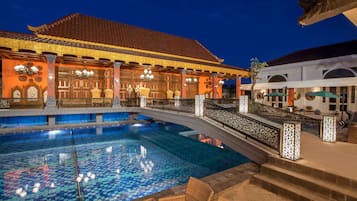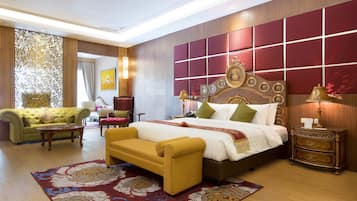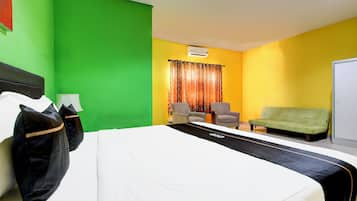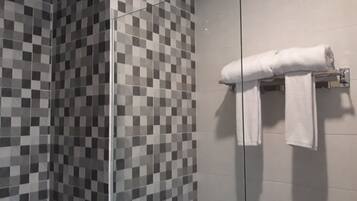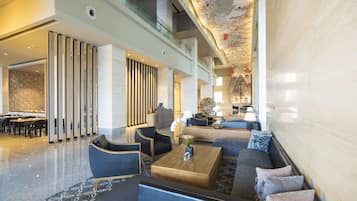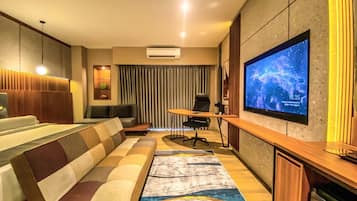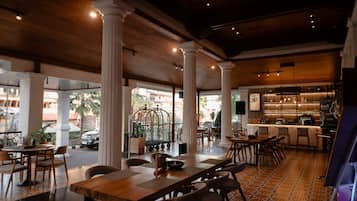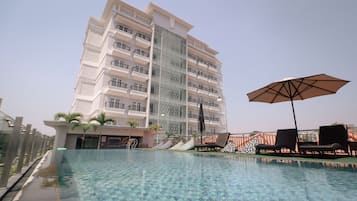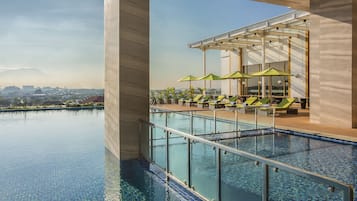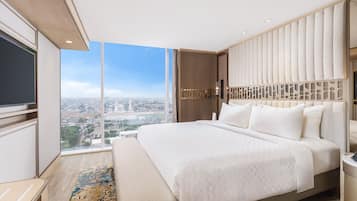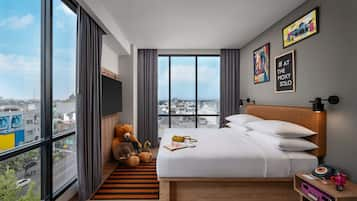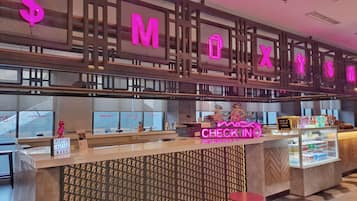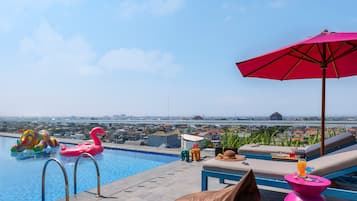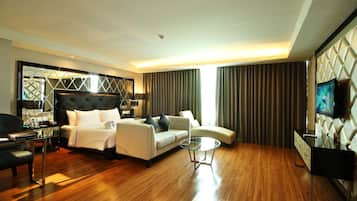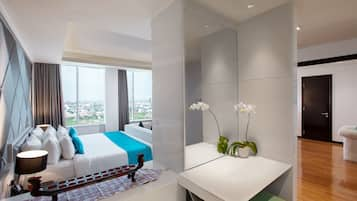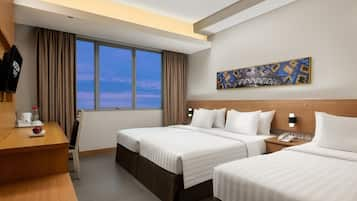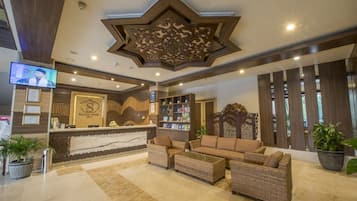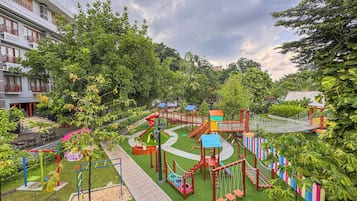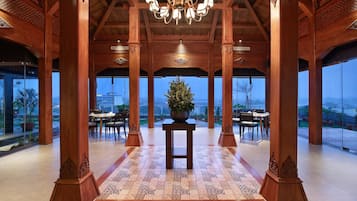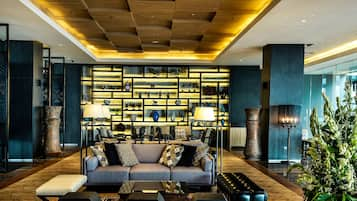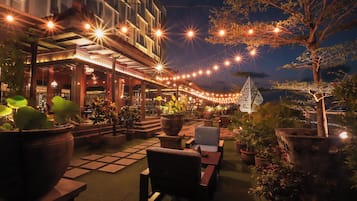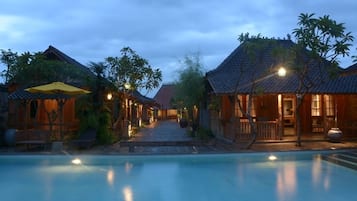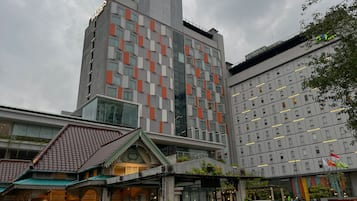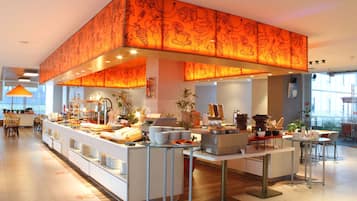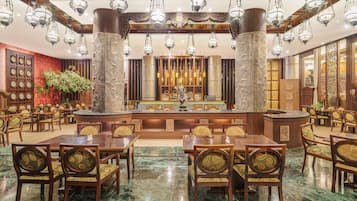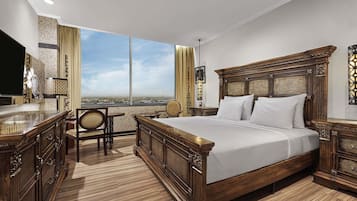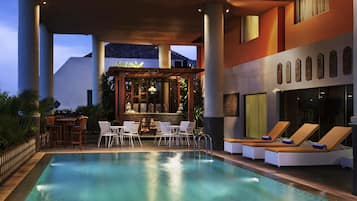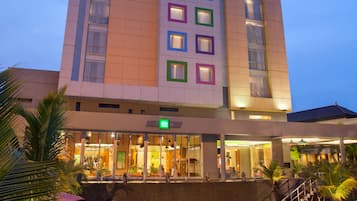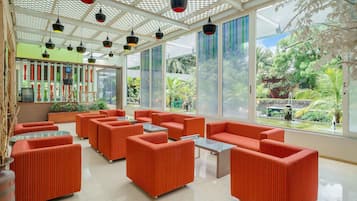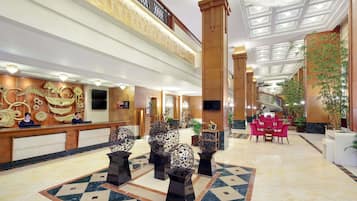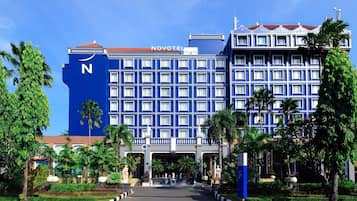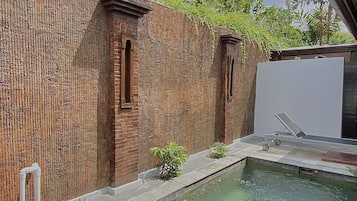Photo by Sharrie Shaw
Find Hotels near Adisumarmo Intl. Airport (SOC)
- Change your mindBook hotels with free cancellation
- Be pickySearch almost a million properties worldwide
Check prices for these dates
Compare hotels near Adisumarmo Intl. airport with room rates, reviews, and updated availability. Most hotels are fully refundable.
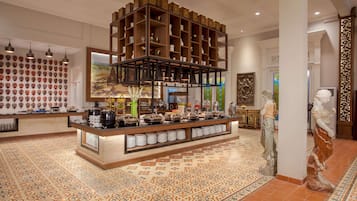
Ramada Suites by Wyndham Solo
3 km from Surakarta (SOC-Adisumarmo Intl.)
9.0 out of 10, Wonderful, (6)
The price is SAR 120
SAR 145 total
includes taxes & fees
21 Nov - 22 Nov

OYO 94931 Mardi Homestay Syariah
0.6 km from Surakarta (SOC-Adisumarmo Intl.)
The price is SAR 19
SAR 23 total
includes taxes & fees
21 Nov - 22 Nov

Hotel O Jalan Slamet Riyadi Near Bandara Adi Soemarmo Formerly Amanah Sejahtera
1.1 km from Surakarta (SOC-Adisumarmo Intl.)
The price is SAR 20
SAR 25 total
includes taxes & fees
24 Nov - 25 Nov

Front One Hotel Airport Solo
0.8 km from Surakarta (SOC-Adisumarmo Intl.)
The price is SAR 78
SAR 95 total
includes taxes & fees
23 Nov - 24 Nov

Alila Solo, Java
6.5 km from Surakarta (SOC-Adisumarmo Intl.)
9.2 out of 10, Wonderful, (132)
The price is SAR 215
SAR 260 total
includes taxes & fees
25 Nov - 26 Nov
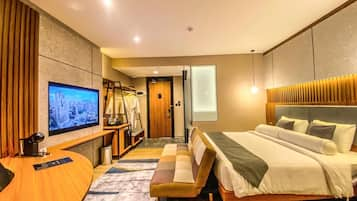
Nata Azana Hotel Solo
10.7 km from Surakarta (SOC-Adisumarmo Intl.)
9.6 out of 10, Exceptional, (7)
The price is SAR 97
SAR 120 total
includes taxes & fees
23 Nov - 24 Nov
Lowest nightly price found within the past 24 hours based on a 1 night stay for 2 adults. Prices and availability subject to change. Additional terms may apply.
Top Adisumarmo Intl. Hotel Reviews

Zest Parang Raja Solo by Swiss-Belhotel International
6/10 Okay
Hotels with Free Airport Shuttle in Ngemplak
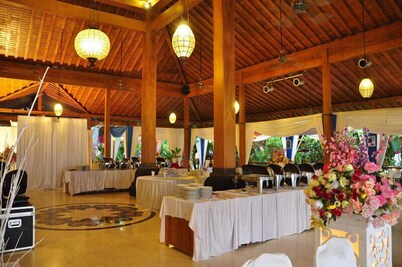
The Gambir Anom Hotel Resort & Convention
Jl. Embakasi Haji No. 24, Solo Ngemplak Central Java
Frequently asked questions
Explore a world of travel with Expedia
Hotels Close to Nearby Airports
Hotels near popular Ngemplak Attractions
- Solo Paragon Lifestyle Mall
- Muhammadiyah University of Surakarta
- Mangkunegaran Palace
- Klewer Market
- The Heritage Palace
- Kraton Surakarta
- Solo Square
- Gede Market
- De' Tjolomadoe
- Danar Hadi
- Bengawan Solo
- Balekambang City Park
- Sangiran Early Man Site
- Radya Museum Library
- Sriwedari Amusement Park
- Hartono Mall
- Nakamura Klinik
- Mesjid Agung
- Pasar Klewer
- Radya Pustaka Museum
Hotels in top Ngemplak neighborhoods
Hotel options around Adisumarmo Intl.
- Collection O Solo near Universitas Muhammadiyah Surakarta formerly Kedaton Home
- favehotel Manahan - Solo
- ZG Homestay Solo
- Swiss-Belinn Saripetojo Solo
- Grand Sae Boutique Hotel
- HARRIS Hotel & Conventions Solo
- Zest Parang Raja Solo by Swiss-Belhotel International
- Zigna Kampung Batik
- Aston Solo
- POP! Hotel Solo
- Arini Hotel
- Diamond Hotel Solo
- Megaland Hotel
- Red Chilies Hotel
- Mangkuyudan Hotel Solo
- Swiss-Belhotel Solo
- Riyadi Palace Hotel
- Malioboro Inn Solo
- Novotel Solo
- Solo Paragon Hotel & Residences
![At the museum no photos are allowed which is really unfortunate as it was well worth the visit and the guided tour is definitely not to be missed. In the museum there are even Batik made from the Dutch era which depicts stories like Little Red Riding Hood and Snow White!
I enjoyed the tour v much and at the end of the tour we were brought to this room where the artisan were working on hand drawn batik.
Below is an excerpt from Wikipedia for anyone interested in learning more about the process of batik making.
Firstly, a cloth is washed, soaked and beaten with a large mallet. Patterns are drawn with pencil and later redrawn using hot wax, usually made from a mixture of paraffin or bees wax, sometimes mixed with plant resins, which functions as a dye-resist. The wax can be applied with a variety of tools. A pen-like instrument called a canting (IPA: [tʃantiŋ], sometimes spelled with old Dutch orthography tjanting) is the most common. A canting is made from a small copper reservoir with a spout on a wooden handle. The reservoir holds the resist which flows through the spout, creating dots and lines as it moves. For larger patterns, a stiff brush may be used. Alternatively, a copper block stamp called a cap (IPA: [tʃap]; old spelling tjap) is used to cover large areas more efficiently.
After the cloth is dry, the resist is removed by scraping or boiling the cloth. The areas treated with resist keep their original color; when the resist is removed the contrast between the dyed and undyed areas forms the pattern. This process is repeated as many times as the number of colors desired.
The most traditional type of batik, called batik tulis (written batik), is drawn using only the canting. The cloth need to be drawn on both sides and dipped in a dye bath three to four times. The whole process may take up to a year; it yields considerably finer patterns than stamped batik.
Source: Wikipedia](https://images.trvl-media.com/place/6224808/26fd1460-c65a-4c1a-9444-7a893e883ac9.jpg?impolicy=fcrop&w=1200&h=500&q=medium)
